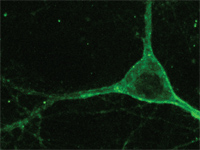The risk for neurodegenerative diseases increases with aging, with various pathological conditions and functional deficits accompanying these diseases. We have previously demonstrated that non-invasive visual stimulation using 40 Hz light flicker ameliorated pathology and modified cognitive function in mouse models of neurodegeneration, but whether 40 Hz stimulation using another sensory modality can impact neurodegeneration and motor function has not been studied. Here, we show that whole-body vibrotactile stimulation at 40 Hz leads to increased neural activity in the primary somatosensory cortex (SSp) and primary motor cortex (MOp). In two different mouse models of neurodegeneration, Tau P301S and CK-p25 mice, daily exposure to 40 Hz vibrotactile stimulation across multiple weeks also led to decreased brain pathology in SSp and MOp. Furthermore, both Tau P301S and CK-p25 mice showed improved motor performance after multiple weeks of daily 40 Hz vibrotactile stimulation. Vibrotactile stimulation at 40 Hz may thus be considered as a promising therapeutic strategy for neurodegenerative diseases with motor deficits.
